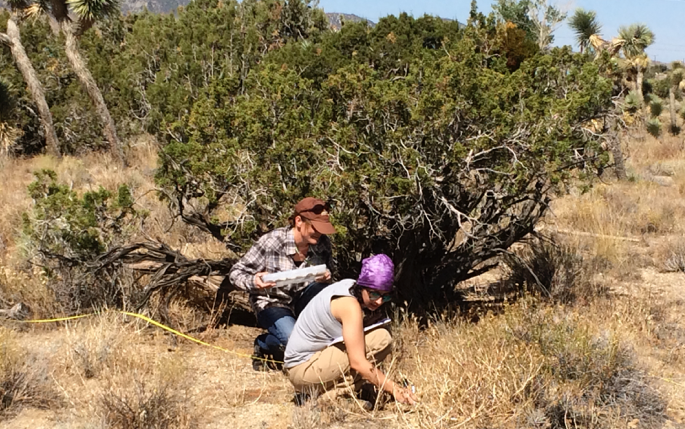Why are we interested in diversity in dryland mosses?
Mosses are the second most diverse group of land plants and they play important ecological roles in terrestrial ecosystems, including arid and semiarid lands! Mosses living in the desert spend much of their lives fully desiccated (i.e. dry) demonstrating an impressive evolutionary distance from their aquatic algal ancestors.
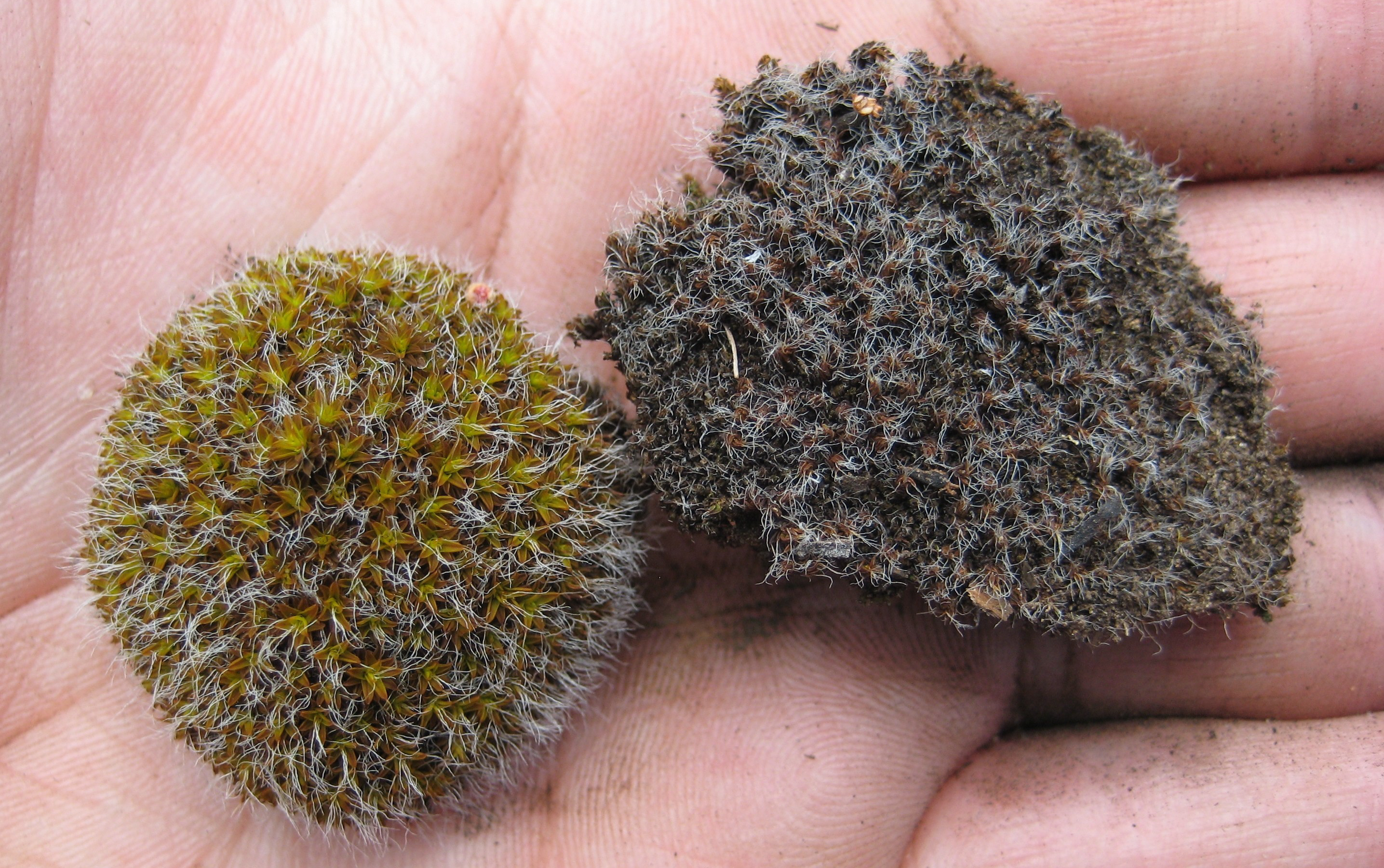
How do mosses survive in the desert?
One important trait that is well-developed in these mosses is the capability of drying without dying, known as desiccation tolerance (Fig. 1). This critical, complex trait allows many mosses to survive and reproduce even in drylands and may be the key to their survival in the face of rapid climate change.
Syntrichia is a large and diverse genus of mosses occurring worldwide and generally in dryland habitats (Fig. 2). Despite their dominance in certain communities such as biological soil crusts, surprisingly little is known about the drivers of biodiversity in this clade.

Our 2016 NSF-Dimensions of Biodiversity Award will allow our research team to reveal links between the genes, physiology, life stages, populations, and communities of Syntrichia that have shaped their important role in dryland ecosystems. In other words, we seek to build a robust understanding of past and present dimensions of biodiversity in Syntrichia.
Dimensions of Diversity in Syntrichia
The overall goal is to understand the evolutionary and ecological mechanisms that have produced and maintained diversity at five different levels of organization:
- Genomic Diversity – The number, order, and variation of genes
- Transcriptomic Diversity – The genes expressed in different developmental stages and hydration states
- Organismal Diversity – The species of Syntrichia around the world
- Population Diversity – The genetic variation within interbreeding individuals across a landscape
- Community Diversity – The variety of organisms such as lichens, cyanobacteria, fungi, and other mosses interacting with Syntrichia in biocrusts (Fig. 3).
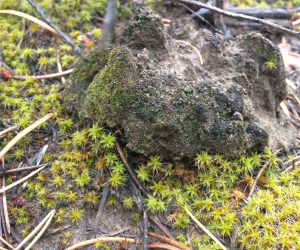
Focal Questions
Our team seeks to answer the following questions for N. American Syntrichia. (The 5 focal questions are numbered. A non-technical version of each question follows in bold.)
Question 1: What are the genetic mechanisms underlying traits (including phenotypic plasticity) that drive diversification, reproduction, habitat selection, and physiological processes?
What genes adapt Syntrichia species to dry habitats?
Question 2: How do genetic diversity, clonal vigor (the intensity of asexual reproduction, Fig. 4), and ratio of the sexes compare among populations along water stress gradients? Are there tradeoffs between desiccation tolerance and sexual reproduction that have shaped these diversity patterns?
When mosses adapt to drier environments, must this come at the cost of reduced sexual reproduction?
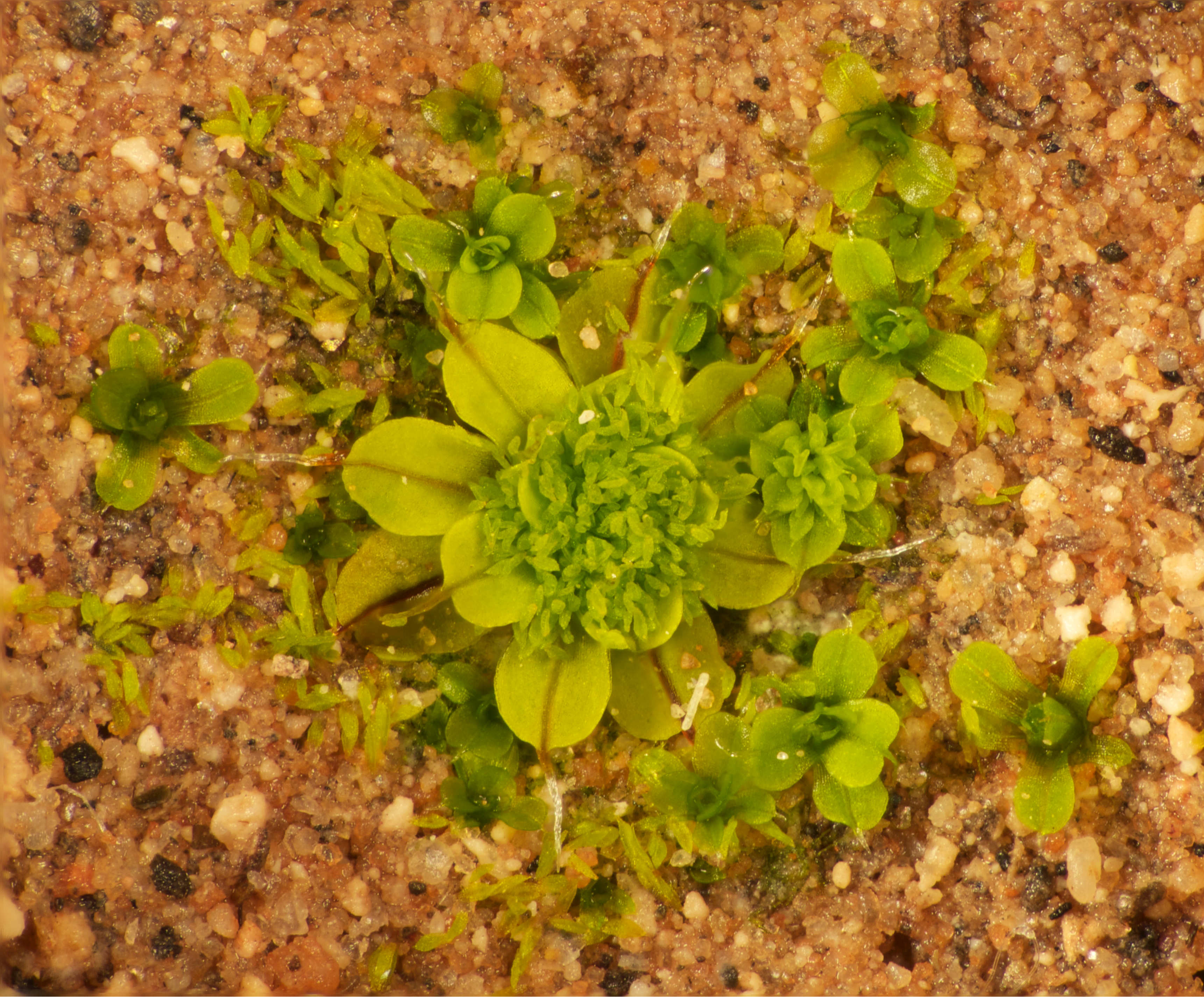
Question 3: Is functional diversity of desiccation tolerance evident among lineages and do these differences vary by life phase or sex, providing evidence for fitness tradeoffs over evolutionary time scales?
Is variation in the strength of desiccation tolerance among species, life stages, and sex an adaptation driving diversification in Syntrichia?
Question 4: Does the phylogenetic history of Syntrichia suggest diversification (possibly convergent) in physiological traits, or does it suggest conservation of physiology and subsequent colonization of suitable environments by specialized lineages (Fig. 5)?
Has extreme desiccation tolerance evolved in Syntrichia more than once?
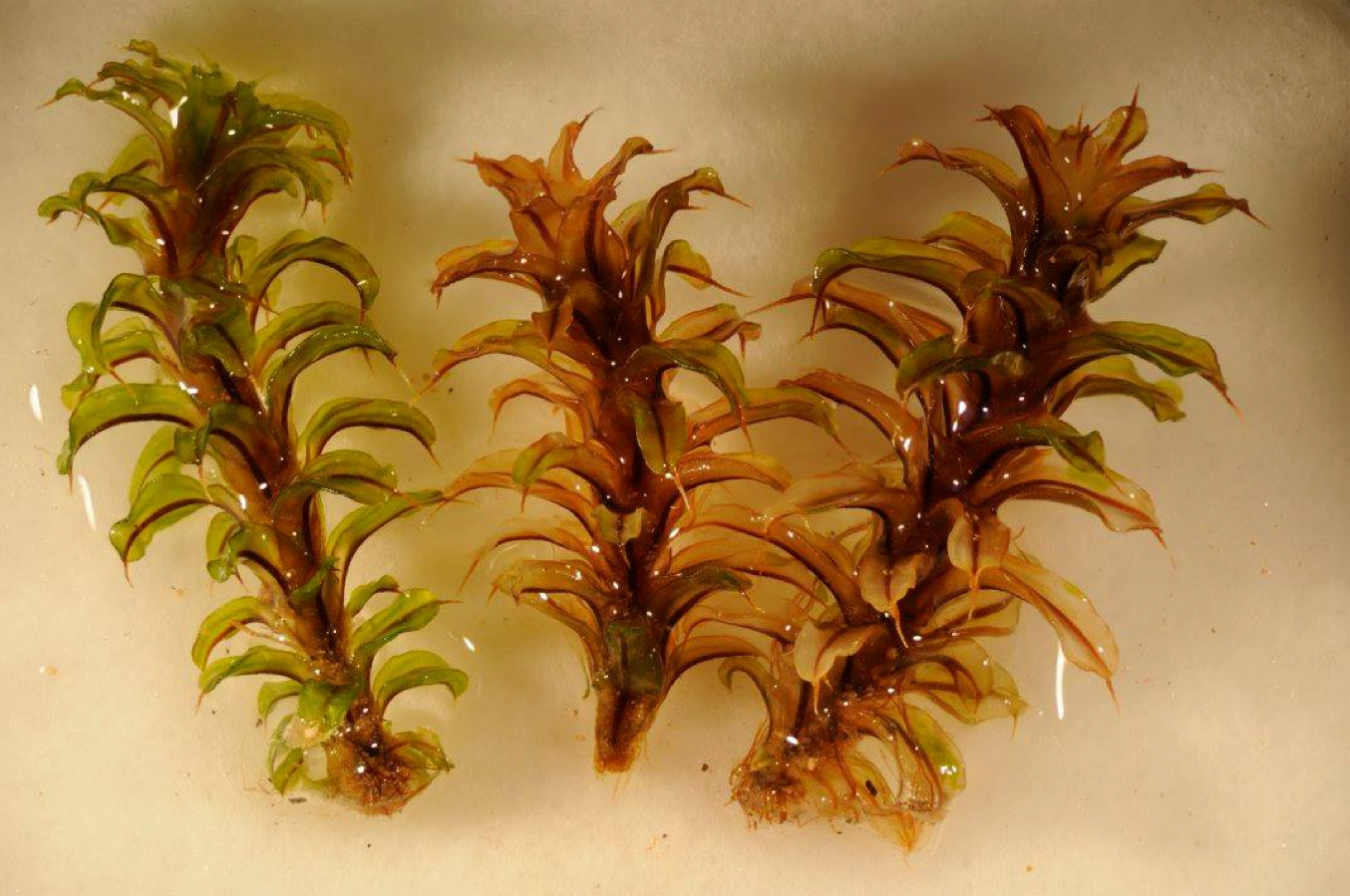
Question 5: Do high levels of genetic, functional, and phylogenetic diversity improve the resilience of moss-dominated biocrusts (Fig. 6) to climate change?
How does genetic, functional, and phylogenetic diversity affect resilience of moss-dominated biocrusts to climate change?
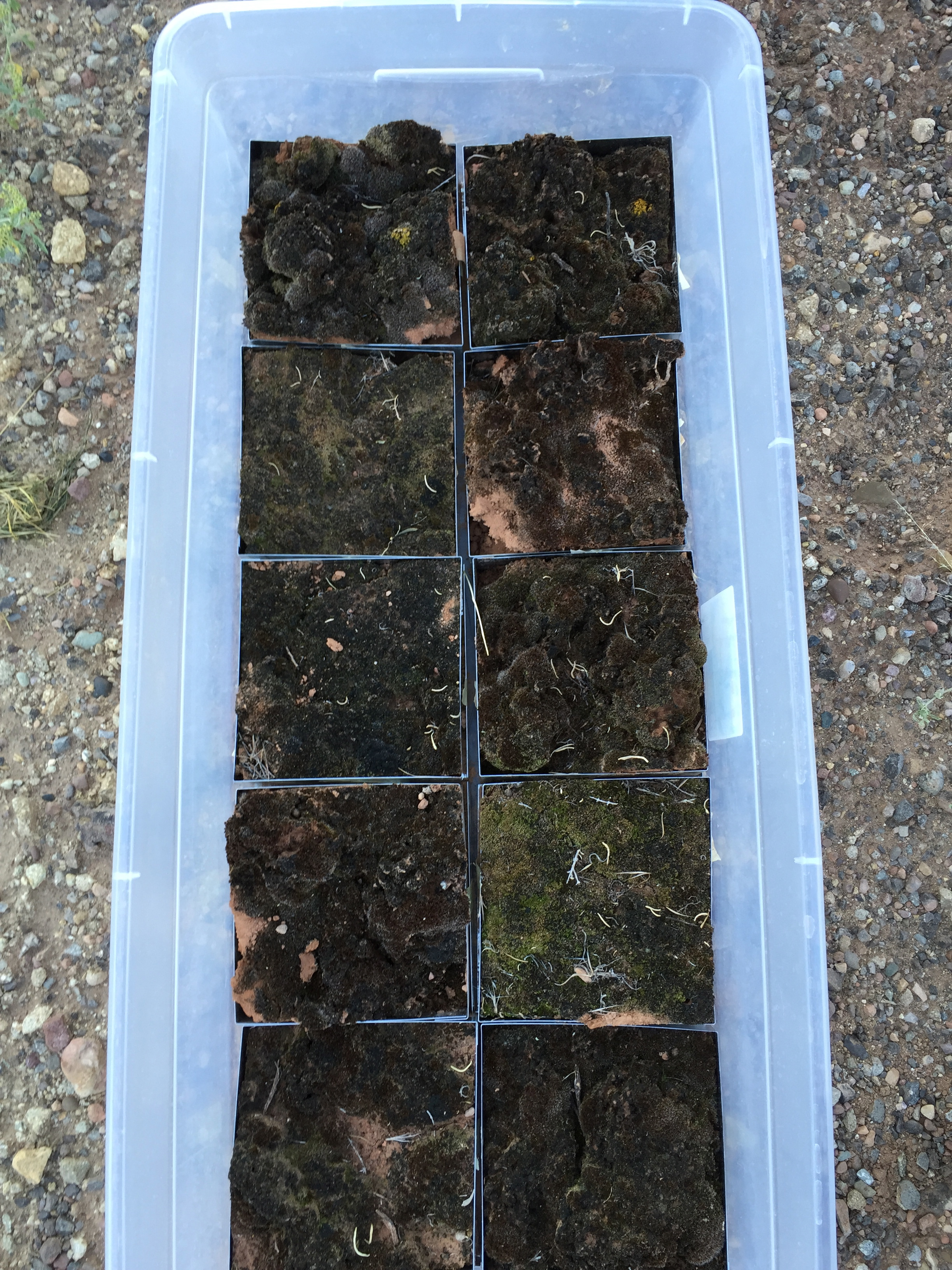
Intellectual Merit & Broader Impacts
Six Primary Investigators and over 20 students will bring together cutting-edge tools in genomics, population genetics, phylogenetics, physiology, and ecology with the potential to discover novel mechanisms involved in land plant diversification and biodiversity maintenance.
Both the water relations (Fig. 7) and reproductive biology of mosses are completely unlike vascular plants. As a consequence of this, the study of mosses yields a valuable model system that can broaden our understanding of the drivers of land plant biodiversity.
How did mosses aid the diversification of plants on land?
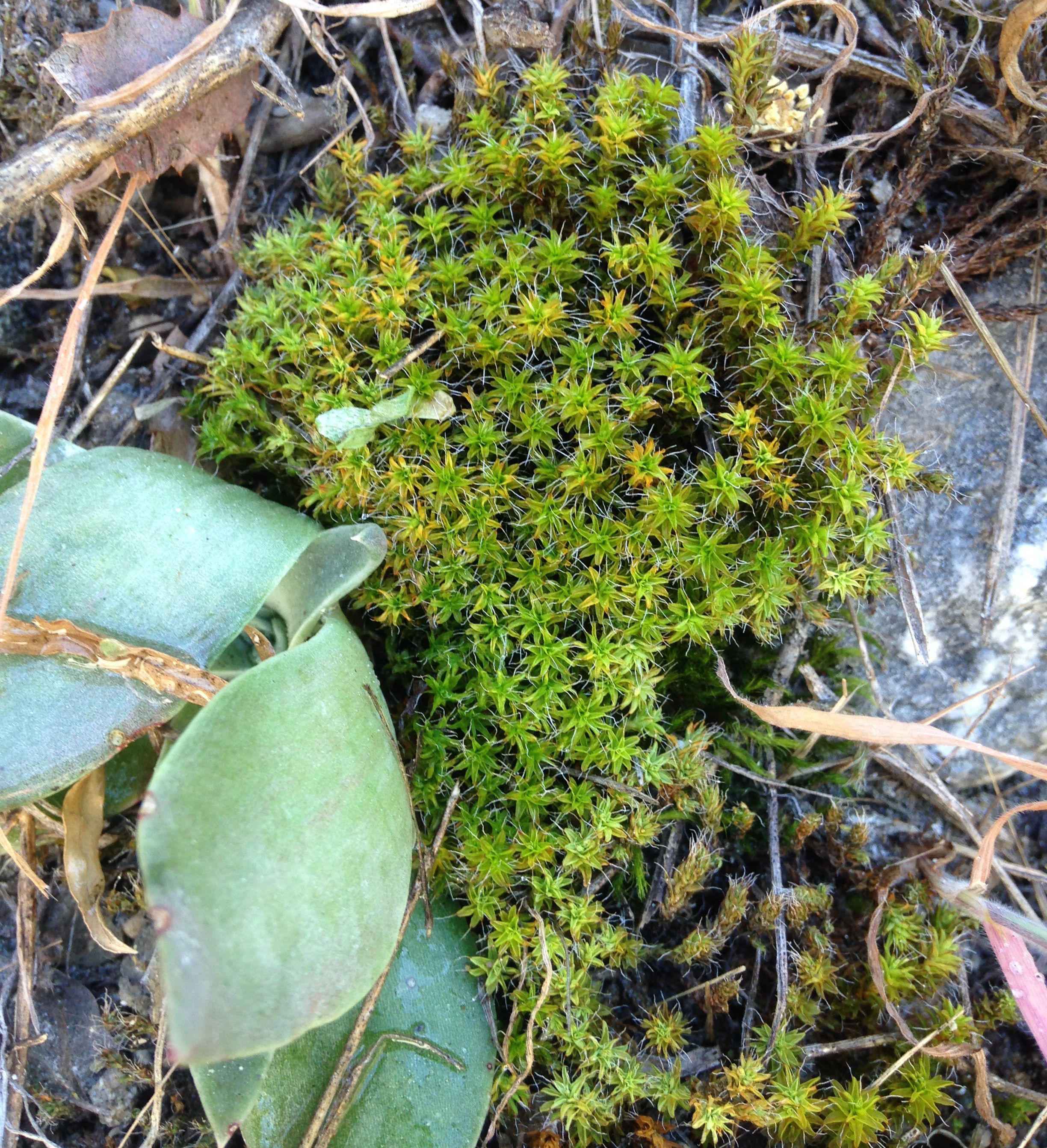
The proposed multifaceted approach will generate an integrated assessment of how the genetic, phylogenetic, and functional biodiversity within Syntrichia are shaped by evolutionary forces and expressed physiologically. This will allow a deeper understanding of how mosses impact the function and resiliency of communities and ecosystems they inhabit.
The results of this project will also have far reaching implications for other areas of plant biology including agriculture (Fig. 8).
The research team will promote training, teaching, and learning involving moss biodiversity in five ways:
- University Education: We will integrate 2 postdoctoral associates, 7 graduate students, and approximately 20 undergraduate students and into field (Fig. 9) and laboratory research.
- Pre-University Education: An active-learning classroom module appropriate for secondary or postsecondary classrooms will be established and introduced to local teachers.
- Media: We will produce a Diversity in Action short-film series featuring mosses and biocrusts transitioning from desiccation dormancy.
- Citizen Science: A citizen science program “Citizens of the Crust” will be created to increase public participation and stewardship for biocrust ecosystems.
- Workshops: A series of free public workshops will be offered, introducing participants to the hidden world of biocrusts through field collecting, lectures by team members, and microscopy labs.
